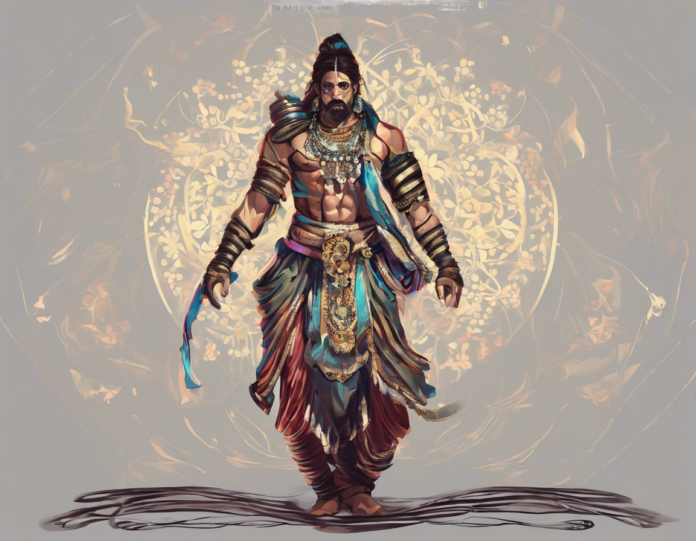In Hinduism, Kalki is the prophesied tenth avatar of Lord Vishnu, who is believed to appear at the end of Kali Yuga to restore dharma and usher in a new era. The concept of Kalki has fascinated believers for centuries, with many interpretations and speculations surrounding the timing and nature of his arrival. Let’s delve deeper into the mystical persona of Kalki and explore the various aspects associated with this enigmatic figure.
The Legend of Kalki
According to Hindu scriptures, Kalki is described as a warrior riding a white horse, Devadatta, wielding a fiery sword to vanquish evil forces and establish righteousness on Earth. He is envisioned as a divine being, who descends when virtue diminishes and wickedness prevails, signifying the culmination of the current age and the dawn of a new Golden Age. The Puranas depict Kalki as a savior figure destined to cleanse the world of corruption and injustice, leading humanity towards spiritual enlightenment and harmony.
The Characteristics of Kalki
Kalki, the harbinger of change, is characterized by various attributes that set him apart from the other avatars of Vishnu:
1. Divine Warrior
Kalki is portrayed as a fierce warrior who battles the forces of darkness to restore peace and order in the universe. His valor and prowess symbolize the triumph of good over evil in the ultimate cosmic showdown.
2. Incarnation of Vishnu
As the purna-avatar, Kalki embodies the complete essence of Lord Vishnu, possessing all his divine qualities and powers to fulfil his divine mission on Earth.
3. Time of Revelation
The prophecy of Kalki’s arrival signifies the culmination of the current age marked by moral decline and chaos, heralding a new era of enlightenment and righteousness for humanity.
4. Catalyst of Transformation
Kalki’s appearance is seen as a pivotal moment in the cosmic cycle, initiating a transformative phase that paves the way for the renewal and rejuvenation of the world.
The Esoteric Symbolism of Kalki
Beyond the literal interpretation of Kalki as a celestial being, there exist deeper layers of symbolism associated with his persona:
1. Inner Awakening
The narrative of Kalki’s descent is often interpreted as a metaphor for the individual journey of self-realization and spiritual evolution. His arrival signifies the awakening of higher consciousness and the pursuit of inner harmony.
2. Ethical Restoration
Kalki’s mission to restore dharma encapsulates the eternal struggle between righteousness and malevolence, highlighting the importance of upholding moral values and ethical principles in the face of adversity.
3. Cosmic Renewal
The concept of Kalki embodies the cyclical nature of existence, where destruction leads to rebirth and transformation, symbolizing the eternal cycle of creation and dissolution in the cosmic tapestry.
The Controversies Surrounding Kalki
While Kalki is venerated as a divine figure in Hindu mythology, his portrayal has sparked debates and controversies over the centuries:
1. Interpretational Variations
Different sects and scholars offer diverse interpretations of Kalki’s role and significance, leading to conflicting views on the nature of his advent and its implications for humanity.
2. Historical Analogies
Some researchers propose historical parallels to Kalki’s legend, suggesting that the concept of a messianic figure who ushers in a new era is not unique to Hinduism but has parallels in other religious traditions as well.
3. Mythical Allegories
Critics argue that the mythos surrounding Kalki is allegorical in nature, representing timeless themes of redemption, renewal, and transcendence rather than a literal prophecy of a future incarnation.
Unraveling the Mystique of Kalki
In essence, Kalki embodies the archetype of the divine redeemer who appears at the twilight of an age to steer humanity towards a path of righteousness and enlightenment. Whether viewed as a historical figure, a symbolic allegory, or a cosmic principle, the legend of Kalki continues to captivate the imagination of believers and scholars alike, inviting contemplation on the eternal struggle between light and darkness in the unfolding drama of existence.
Frequently Asked Questions (FAQs)
1. Is Kalki a real person or a symbolic figure?
Kalki is a mythological figure in Hinduism, symbolizing the concept of a divine savior who appears at the end of a cosmic cycle to restore balance and righteousness.
2. When is Kalki expected to arrive according to Hindu scriptures?
The timing of Kalki’s arrival is believed to coincide with the end of Kali Yuga, the current age of moral degeneration, although the exact timeframe remains open to interpretation.
3. What is the significance of Kalki’s white horse, Devadatta?
The white horse symbolizes purity, strength, and swiftness, reflecting Kalki’s role as a divine warrior who rides into battle to defeat darkness and establish a new era of prosperity and peace.
4. How does Kalki compare to other avatars of Lord Vishnu?
Each avatar of Vishnu serves a specific purpose in upholding dharma and restoring cosmic order, with Kalki being the final avatar who ushers in the end of the current age and initiates a new cycle of creation.
5. What lessons can we learn from the legend of Kalki?
The story of Kalki reminds us of the eternal struggle between good and evil, the importance of upholding moral values, and the belief in the eventual triumph of righteousness over darkness.












